This post may contain affiliate links. Please read our policy page.
Using upcycled fabric for your outdoor patio is a great way to mix style with sustainability. I love transforming discarded materials into unique cushion covers, vibrant table settings, and whimsical curtains that elevate the atmosphere. These pieces not only showcase creativity but also reflect eco-conscious choices. Plus, they hold their charm against the elements with proper care. If you’re curious about other innovative uses for upcycled fabric, I’ve got plenty more ideas to share!
Understanding Upcycled Fabric: What It Is and Why It Matters
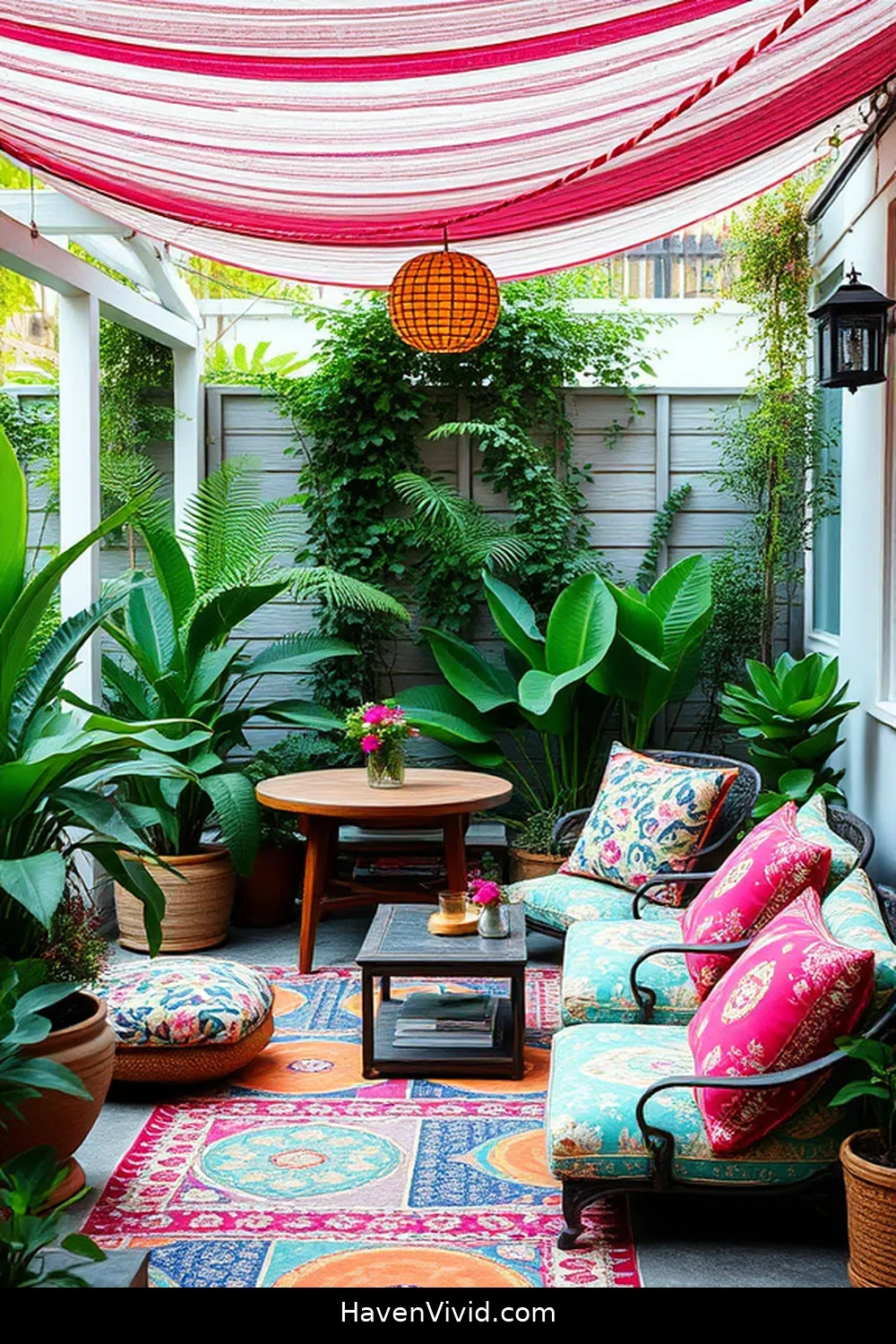
While many people might think of recycling as the first step in eco-friendly living, understanding upcycled fabric reveals a deeper, more innovative approach to sustainability.
Upcycled fabric consists of materials that would otherwise end up in landfills, creatively transformed into new products. It’s a process that uses discarded textiles, giving them a second life while reducing waste and conserving resources.
Upcycled fabric breathes new life into discarded textiles, reducing waste and conserving resources in a creative and sustainable way.
I’ve found that upcycled fabrics not only lessen environmental impact but also spark creativity. Each piece carries a unique story, adding character to any project.
When I choose upcycled fabric, I’m actively participating in a circular economy, promoting a sustainable lifestyle that feels both responsible and rewarding. Embracing this practice helps our environment without compromising style.
Creative Cushion Covers: Transforming Old Fabrics Into Stylish Seating

When I transform old fabrics into creative cushion covers, I not only refresh my living space but also take a stand against waste. It’s amazing how a simple pillow can elevate the style of my outdoor patio. I love mixing patterns and colors, making each cover unique. This process allows me to showcase my personality and creativity while being eco-conscious.
Here’s a quick guide to help you get started:
| Fabric Type | Suggested Projects |
|---|---|
| Denim | Rustic cushion covers |
| Vintage Sheets | Bright, cozy accents |
| Cotton Curtain | Elegant outdoor pillows |
Unique Table Settings: Using Upcycled Textiles for Outdoor Dining
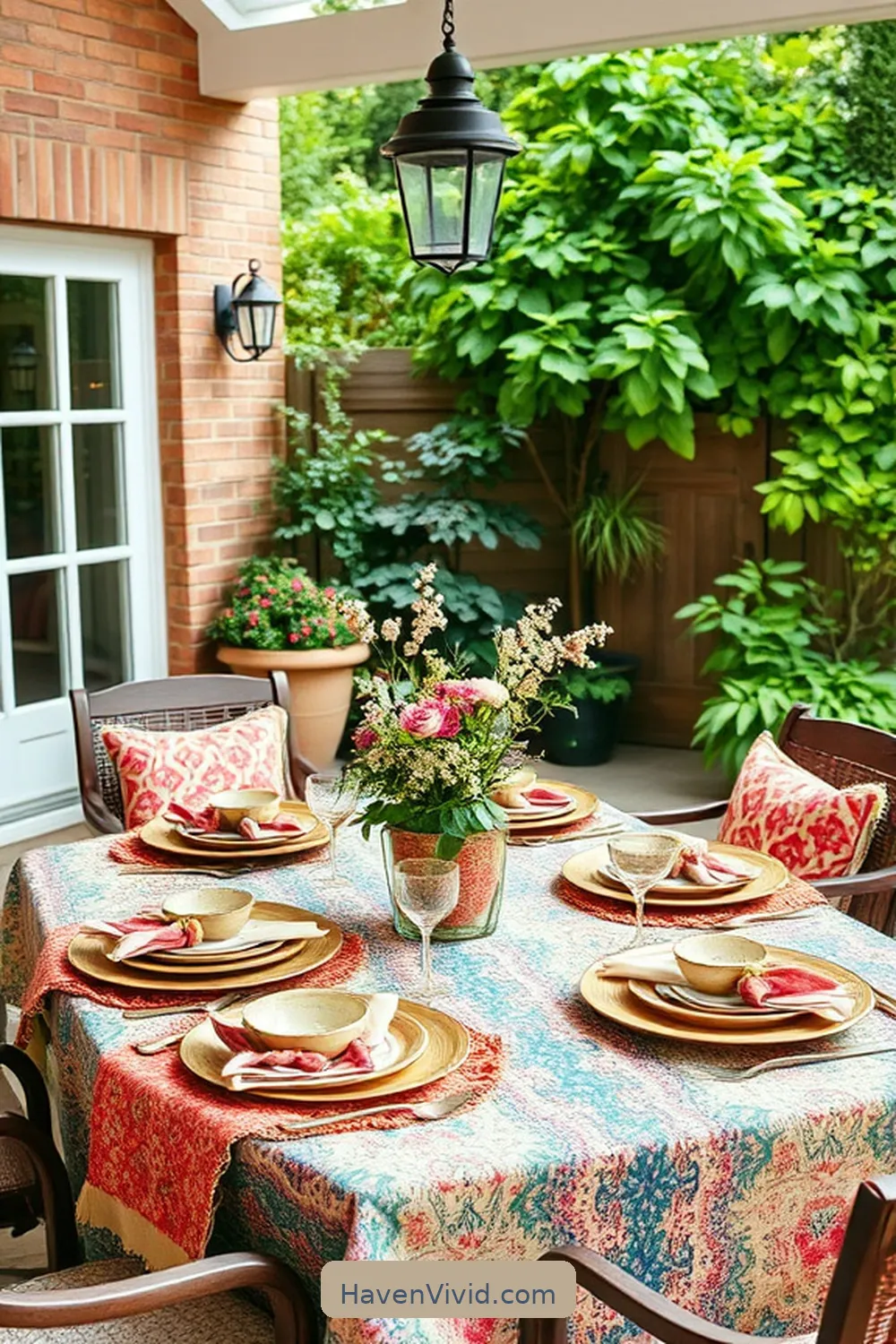
How can you create an inviting outdoor dining experience while being eco-friendly? One of my favorite ways is by incorporating upcycled textiles into unique table settings.
I love using old tablecloths or fabric remnants as vibrant table runners, instantly brightening up the space. You can get creative with coordinating napkins crafted from leftover fabric—each adds a touch of charm and personality.
I also enjoy making placemats from fabric scraps, giving each place setting a custom feel. Don’t hesitate to mix and match patterns; it creates a fun, eclectic vibe.
By using these upcycled textiles, not only do I reduce waste, but I also showcase my style, making each outdoor meal feel special and sustainable.
Give it a try—you’ll love the results!
Recommended Items
Explore our curated selection of products and tools to elevate your outdoor patio with eco-friendly flair!
DIY Draping: Fabric Canopies and Curtains for a Cozy Atmosphere

Creating a cozy atmosphere outdoors can be as simple as draping fabric canopies and curtains. I love using upcycled fabric to transform my patio into an inviting space.
Choose lightweight, colorful materials that flutter gently in the breeze. Securing them with hooks or poles, I can create an airy feel while providing shade.
Opt for lightweight, vibrant fabrics that dance in the wind, effortlessly bringing shade and a breezy ambiance to your outdoor space.
You can mix and match patterns for an eclectic look or stick with solid colors for a more streamlined approach. Add curtains to shelter areas for privacy or an intimate dining experience.
Simply tie them back or let them hang loose, depending on the mood you want to create. This easy DIY project can elevate your outdoor space into a relaxing retreat, perfect for gathering with friends or enjoying a quiet moment alone.
Upcycled Fabric Planters: Adding Eco-Friendly Greenery to Your Patio
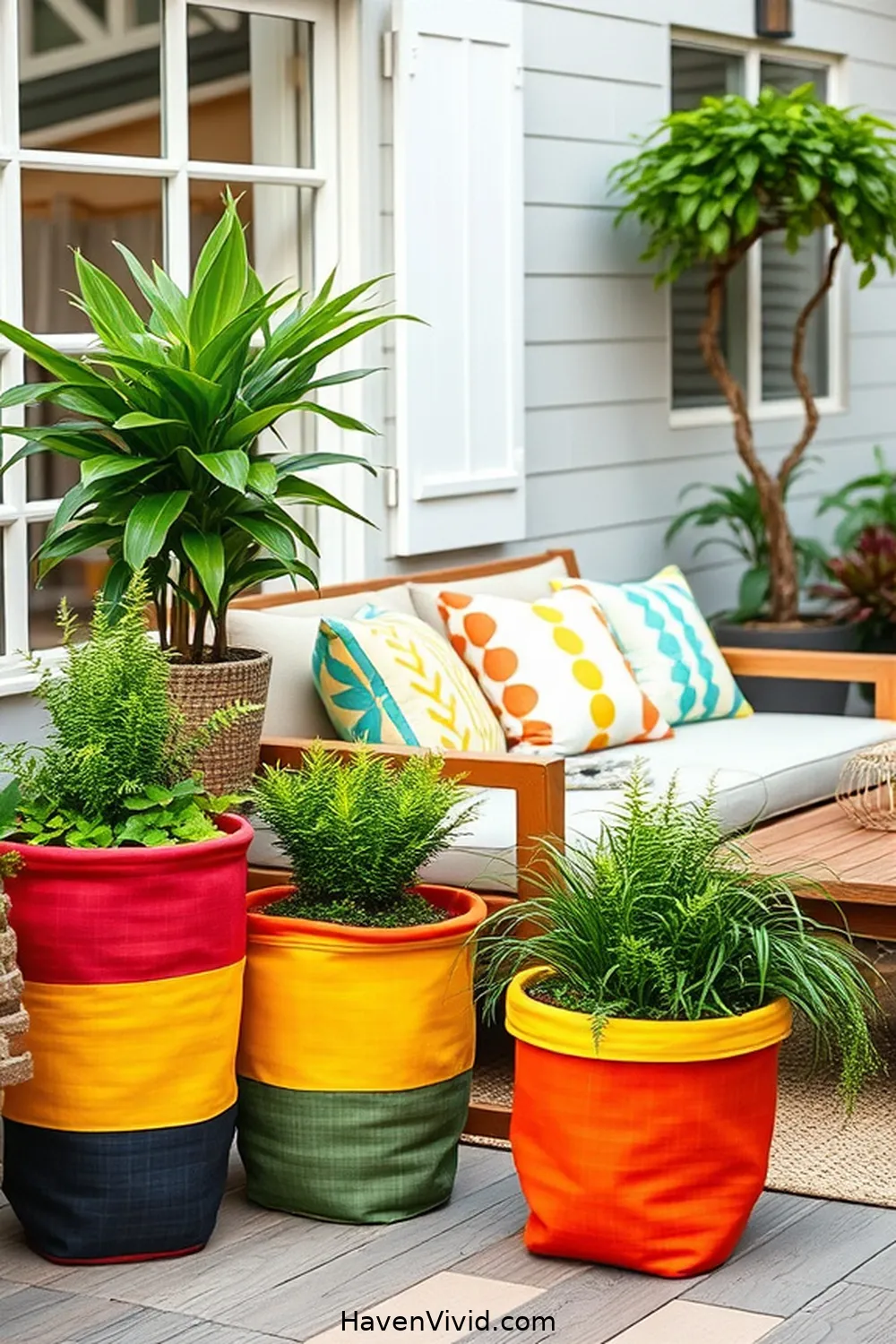
Transforming ordinary fabric into planters not only adds a touch of creativity to my patio but also promotes eco-friendly living.
I love repurposing old fabric scraps, like curtains or upholstery remnants, into vibrant planters. First, I cut the fabric into desired sizes, ensuring there’s enough to hold soil and plants.
Then, I line the insides with plastic or non-woven fabric to prevent leaks. Planting herbs or flowers in these unique creations brings life to my space while showing off my DIY skills.
Plus, it’s a conversation starter! Each planter tells a story, bridging sustainability with personal style.
Upcycled fabric planters definitely make my outdoor area feel more inviting and environmentally friendly.
Step-by-Step Guide to Upcycled Patio Decor
Sustainable Outdoor Accessories: Pillows, Rugs, and More
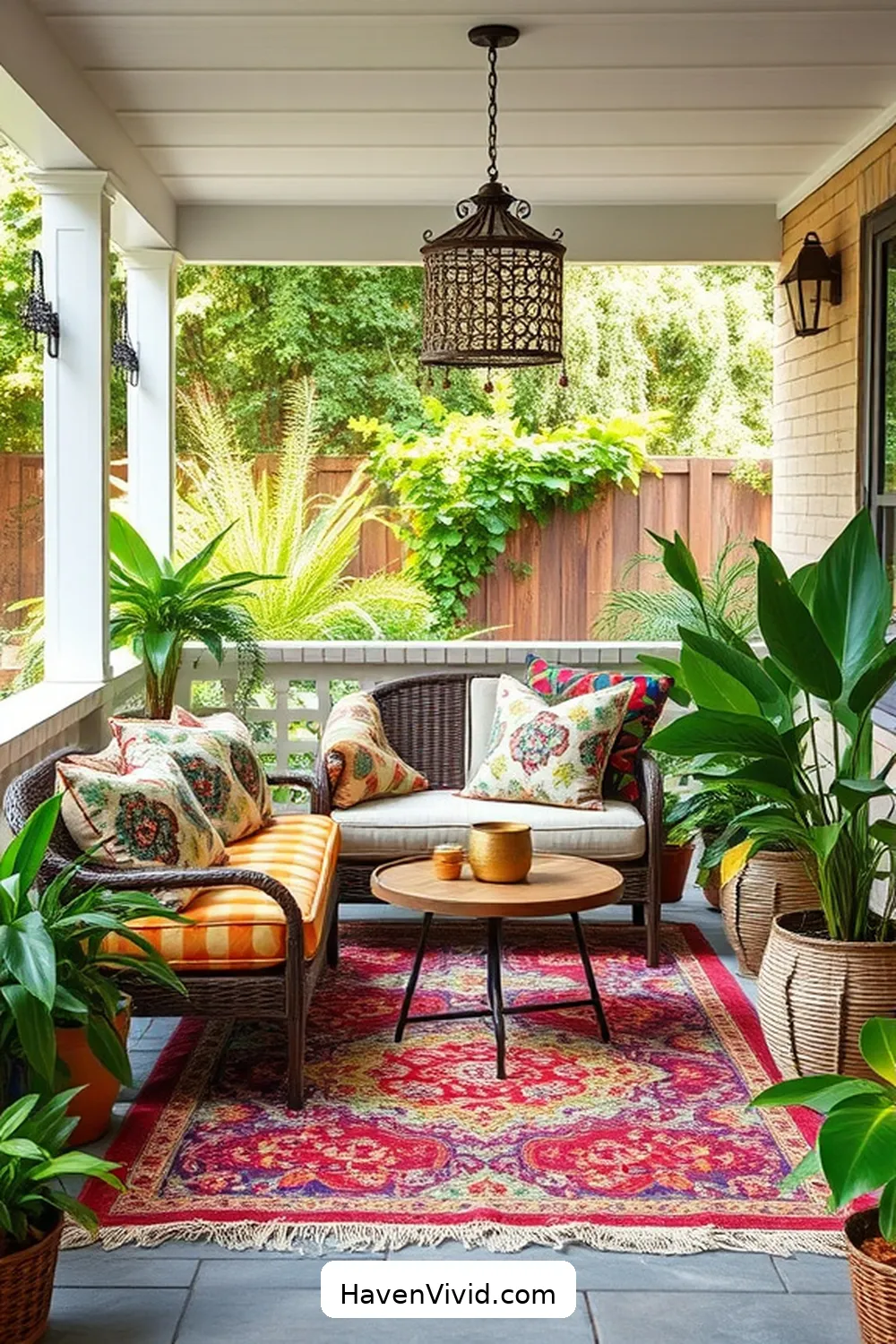
While my patio thrives with plants, it’s the sustainable outdoor accessories that truly elevate the vibe.
I’ve found that adding eco-friendly pillows made from upcycled fabrics instantly transforms my seating area. They’re not just colorful accents; they’re also comfortable and durable for any weather.
Similarly, an outdoor rug crafted from recycled materials ties the space together beautifully while being easy to clean.
An outdoor rug made from recycled materials effortlessly unifies the space while offering easy maintenance and style.
I love the way these accessories create a cozy atmosphere without compromising my commitment to sustainability.
I’m even drawn to complementary items like planters made from repurposed plastic. Each piece reflects my eco-conscious values, making my outdoor area both stylish and responsible.
With a few thoughtful choices, you can easily enhance your patio’s aesthetic while caring for the planet.
Customizable Outdoor Art: Wall Hangings and Decorative Pieces
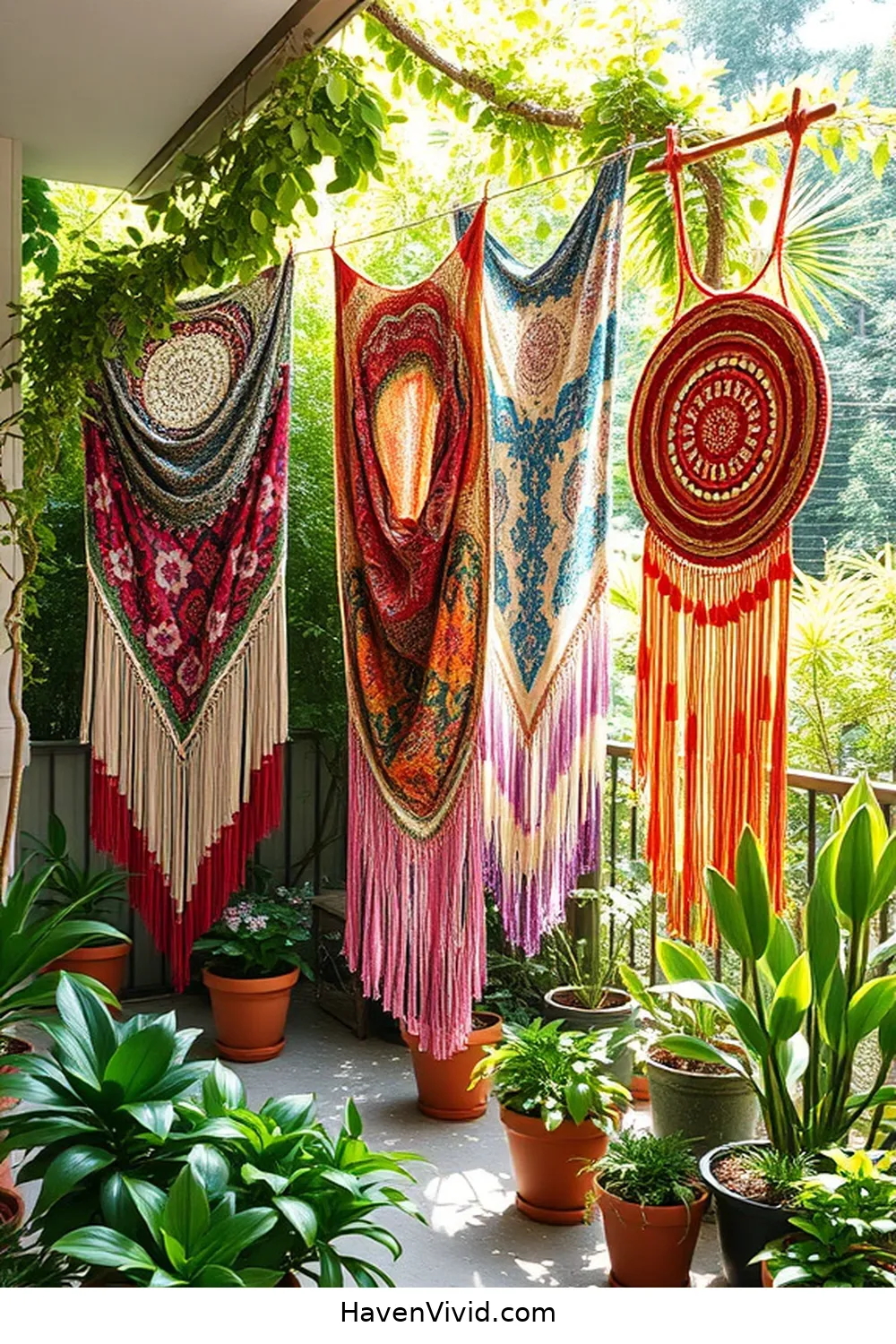
Eco-friendly outdoor accessories have laid a fantastic foundation for my patio’s style, but adding customizable outdoor art takes it to another level.
I love incorporating wall hangings and decorative pieces made from upcycled fabric. They not only showcase my personality but also contribute to sustainability. Upcycled art allows me to express creativity while being eco-conscious—mixing colors, patterns, and textures to create unique focal points.
Plus, these pieces can easily be tailored to my patio’s theme, whether rustic or modern. From whimsical banners to fabric wall hangings, each addition transforms my space into a vibrant oasis.
Customizing my outdoor art brings joy and a sense of pride, reminding me that eco-friendly living can be both stylish and meaningful.
Hosting With a Twist: Upcycled Fabric for Eco-Conscious Entertaining
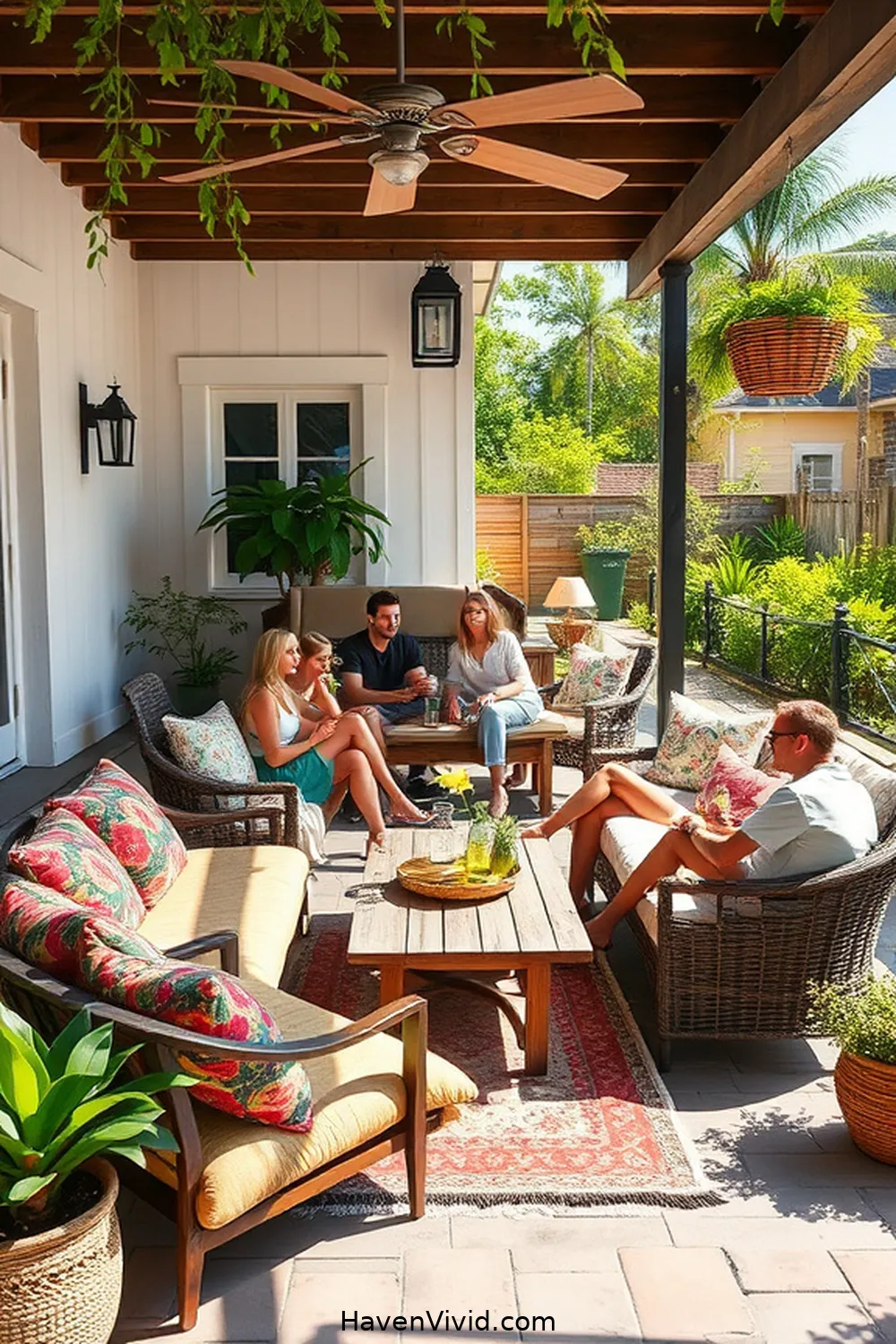
When it comes to entertaining, I love incorporating upcycled fabric to create a stylish yet sustainable atmosphere. Using vibrant, repurposed materials not only adds character but also showcases my commitment to eco-conscious living.
Incorporating upcycled fabric creates a vibrant, eco-friendly atmosphere that reflects my commitment to sustainable entertaining.
I often make table runners, cushions, and even drink coasters from remnants of colorful fabrics, transforming simple outdoor gatherings into visually stunning experiences.
Envision this: a cozy seating area adorned with unique pillows, each telling its own story. I invite my friends to enjoy delicious eco-friendly dishes while surrounded by a vibrant ambiance.
It sparks conversations about sustainability and creativity. By choosing upcycled fabric, I feel good about my choices, knowing I’m making a positive impact while hosting memorable moments.
It’s truly entertaining with a twist!
Tips for Maintaining Upcycled Fabric in Outdoor Environments
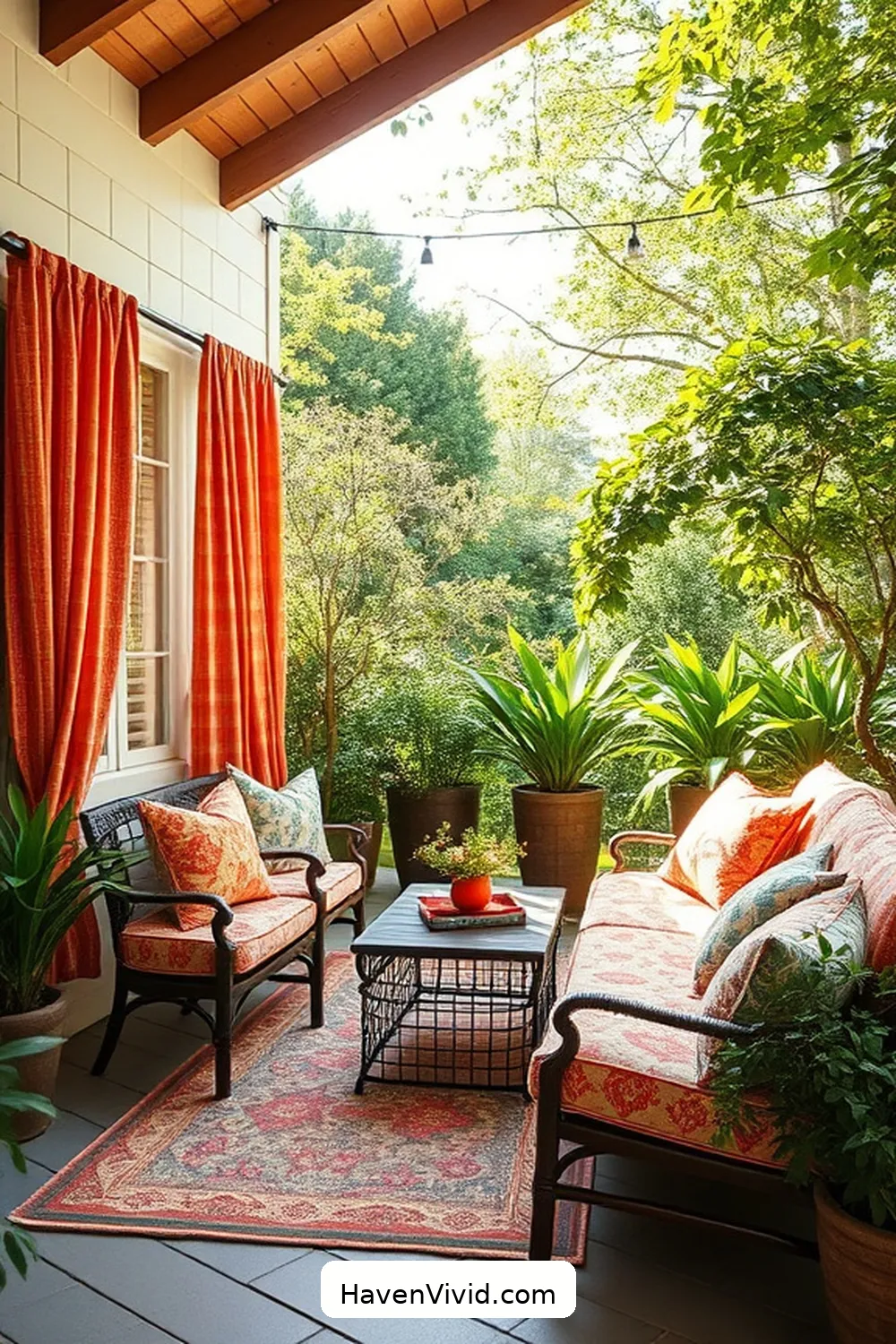
As I enjoy hosting outdoors with my upcycled fabric creations, I’ve learned that maintaining their integrity is key to guaranteeing they last through various weather conditions.
First, I always rinse off any dirt or stains promptly; this guarantees grime doesn’t set in. I typically use a gentle soap and lukewarm water for cleaning.
When possible, I store my fabrics indoors during heavy rain or harsh sun to prevent fading and mold growth.
Regularly inspecting seams and stitching helps catch any wear and tear early.
I also recommend using fabric protectors designed for outdoor materials; they add an extra layer of protection.











